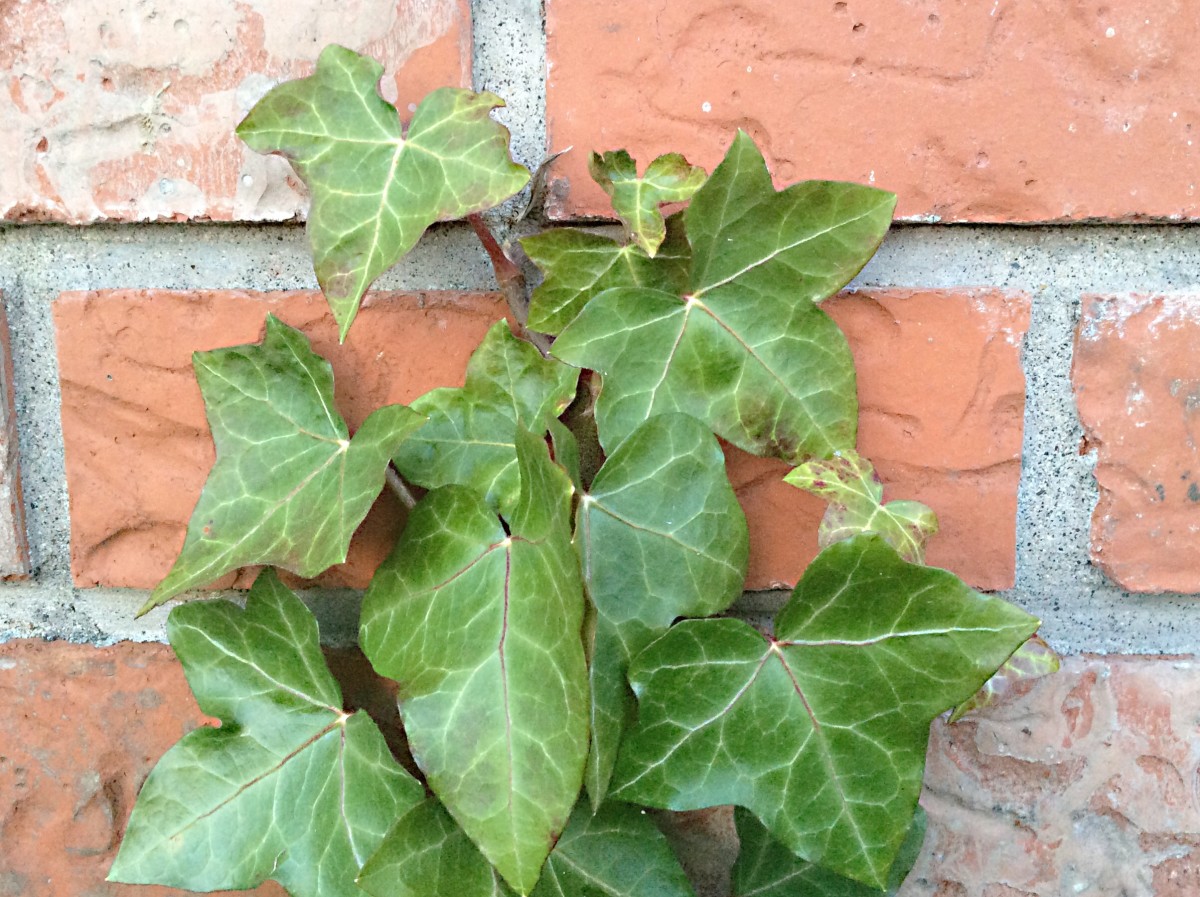
The toxin is found throughout the plant but is most concentrated in the leaves. Vomiting Prolonged Depression Incoordination Hypersalivaton Sleepiness Or Excitation Dilated Pupils Low Body Temperature Low Blood Pressure Coma Seizure And Death In Rare Cases.

Symptoms of English Ivy Poisoning in Dogs.
English ivy dog. Symptoms of English Ivy Poisoning in Dogs. Symptoms caused by ingesting English ivy are generally mild. The toxin is found throughout the plant but is most concentrated in the leaves.
Repeated exposure to the sap of the plant can cause a temporary allergic dermatitis. Can English ivy cause seizures in dogs. All parts of this plant are toxic and if ingested it causes arrhythmias irregular heart rate electrolyte imbalance nausea drooling vomiting tremors seizures weakness collapse and death.
English Ivy This popular ornamental can lead to severe gastrointestinal distress if ingested by a pet. Most types of climbing ivy are considered mildly toxic to dogs including English California devils American needlepoint and five-leaved among others. Your dog is unlikely to die from eating ivy but can become seriously ill.
The toxic chemicals in ivy cause digestive upset such as vomiting diarrhea and abdominal cramps. Also is English Ivy poisonous to dogs. English ivy also known as California or sweetheart ivy is another common indoor decorative plant that can be toxic to dogs and cats if eaten.
Symptoms of intoxication from English ivy can include abdominal pain vomiting and diarrhea or. Answered by Litzy Zboncak on Sun Apr 4 2021 241 AM. English ivy also known as California or sweetheart ivy is another common indoor decorative plant that can be toxic to dogs and cats if eaten.
Symptoms of intoxication from English ivy can include abdominal pain vomiting and diarrhea or excessive salivation. Vomiting abdominal pain hypersalivation diarrhea. Foliage is more toxic than berries.
If you suspect your pet may have ingested a potentially toxic substance call the APCC at 888 426-4435 or contact your local veterinarian as soon as possible. Symptoms of English Ivy Poisoning in Dogs. Symptoms caused by ingesting English ivy are generally mild.
The toxin is found throughout the plant but is most concentrated in the leaves. Repeated exposure to the sap of the plant can cause a temporary allergic dermatitis. What happens if my dog eats English ivy.
English ivy especially the leaves can cause gastrointestinal distress vomiting and diarrhea when eaten and the sap can induce a contact rash when exposed to the skin. Vet bills can sneak up on you. Is English ivy toxic for dogs.
Many popular ivy plants including English ivy and Devils ivyGolden Pothos have. According to the ASPCA and the Pet Poison Helpline English ivy and devils ivy – otherwise known as golden pothos – are toxic to dogs. English ivys foliage is more toxic than its berries.
If your pooch snacks on it he may experience vomiting diarrhea excessive salivation and abdominal pain. English ivy also known as California or sweetheart ivy is another common indoor decorative plant that can be toxic to dogs and cats if eaten. The toxin responsible for the ill effects seen with English ivy ingestion is a triterpanoid saponin.
Is ivy plant poisonous. Ivy can cause severe skin irritation. Ingestion can cause burning in the mouth and throat stupor convulsions.
Yes English Ivy is toxic to dogs. Dogs accidentally consuming the English Ivy plants can show the following clinical symptoms. Vomiting Prolonged Depression Incoordination Hypersalivaton Sleepiness Or Excitation Dilated Pupils Low Body Temperature Low Blood Pressure Coma Seizure And Death In Rare Cases.
English Ivy consumption is also toxic to. Can English ivy cause seizures in dogs. All parts of this plant are toxic and if ingested it causes arrhythmias irregular heart rate electrolyte imbalance nausea drooling vomiting tremors seizures weakness collapse and death.
Hedera helix the common ivy English ivy European ivy or just ivy is a species of flowering plant of the ivy genus in the family Araliaceae native to most of Europe and western Asia. A rampant clinging evergreen vine it is a familiar sight in gardens waste spaces and wild areas where it grows on walls fences tree trunks etc. Across its native and introduced habitats.
English Ivy is a woody evergreen climbing or ground-creeping vine of the genus Hedera in the family Araliaceae. Like other members within the genus this plant has distinctive juvenile and adult life stages. In the juvenile stage the plant will have characteristically lobed leaves and exhibit herbaceous growth to form dense patches on the ground.
In one animal study researchers noted that extract of English ivy offered a protective effect against diabetes in rats likely due to its. English ivy also known as California or sweetheart ivy is another common indoor decorative plant that can be toxic to dogs and cats if eaten. Symptoms of intoxication from English ivy can include abdominal pain vomiting and diarrhea or excessive salivation.
The English Ivy Plant. English ivy or Hedera helix is an evergreen plant that is found in many parts of Canada and the United StatesHedera hibernica is a similar plant that has also been introduced to North America and is often known as English ivy. In its native habitat the common name of this plant is Atlantic or Irish ivy.
Like Hedera helix it may become invasive. English ivy also known as California or sweetheart ivy is another common indoor decorative plant that can be toxic to dogs and cats if eaten. Symptoms of intoxication from English ivy can include abdominal pain vomiting and diarrhea or excessive salivation.
Besides your pets English ivy sap will cause contact dermatitis characterized by severe irritation blistering redness and itchiness. Ingesting its leaves will cause a throat burning stupor delirium convulsions fever rash hallucinations vomiting hypersalivation diarrhea abdominal pain and so on reports North Carolina University Extension Gardener. Whether its climbing an outdoor trellis or sprucing up your living room your puppy should stay away from English ivy.
Also called sweetheart ivy glacier ivy needlepoint ivy or branching ivy both the ASPCA and the Pet Poison Helpline list this plant as toxic to dogs. English Ivy Cats The active toxin in English ivy the glycoside hederin attacks both digestive and nervous systems and is capable of causing coma. Dangers of English Ivy to CatsAccording to the Plant Conservation Alliances Least Wanted List ingesting English ivy can produce diarrhea intestinal upset hyperactivity coma breathing difficulties muscular.
Weve been wanting to get an English cream golden retriever for years and finally were able to get one this year. Weve been preparing for this puppy for months. We found out there was finally a puppy available from the breeder we had decided to go with in October and have been preparing to bring her home ever since.
English Ivy Is Toxic To Dogs. Digoxin a glycoside in this plant is very much harmful to dogs and cause blood in. Whether its climbing an outdoor trellis or sprucing up your living room your puppy should stay away from English ivy.
English ivys foliage is more toxic than its berries. Dangers of Ivy Most types of climbing ivy are considered.